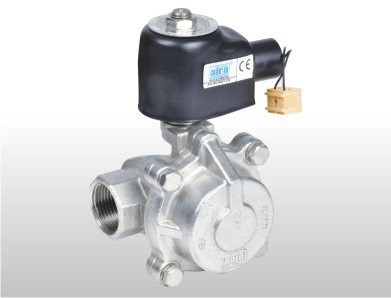Introduction to Solenoid Valve
Solenoid valves are essential components in various industries, offering precise control over the flow of liquids and gases. They are electromechanical devices that use an electromagnetic coil to control the movement of a plunger or a piston, thereby opening or closing the valve.
How Does a Solenoid Valve Work?
Electrical energy is converted into mechanical motion by a solenoid valve. When an electric current passes through the coil, it creates a magnetic field, which attracts the plunger or piston, causing it to move and open or close the valve.
Types of Solenoid Valves
Direct-acting Solenoid Valves
Direct-acting solenoid valves operate without the need for external pressure assistance. They are typically used in applications where a small flow rate and low pressure are required.
Pilot-operated Solenoid Valves
Pilot-operated solenoid valves use the pressure of the fluid to assist in opening and closing the valve. They are suitable for applications requiring higher flow rates and pressures.
Applications of Solenoid Valves
Numerous industries use solenoid valves, including:
- HVAC systems
- Water treatment plants
- Medical equipment
- Automotive industry
- Industrial automation
Advantages of Using Solenoid Valves
- Fast response times
- Precise control over flow rates
- Energy-efficient operation
- Compact design
- Long service life
Factors to Consider When Choosing a Solenoid Valve
When selecting a solenoid valve, it's essential to consider factors such as:
- Fluid compatibility
- Pressure and temperature requirements
- Flow rate
- Voltage and power consumption
- Environmental conditions
Common Issues and Troubleshooting
Despite their reliability, solenoid valves may encounter issues such as valve leakage, coil burnout, or mechanical failure. Troubleshooting methods may include checking for clogs, inspecting electrical connections, or replacing damaged components.
Maintenance Tips for Solenoid Valves
Regular maintenance is crucial to ensure the proper functioning of solenoid valves. This may include cleaning the valve, inspecting seals and gaskets, and lubricating moving parts as needed.
Importance of Proper Installation
Proper installation of solenoid valves is essential to prevent leaks, ensure optimal performance, and extend the valve's lifespan. It's essential to follow manufacturer guidelines and adhere to industry standards.
Conclusion
Solenoid valves play a crucial role in controlling the flow of fluids and gases in various industrial applications. Understanding their operation, types, and maintenance requirements is essential for ensuring efficient and reliable performance.


No comments yet